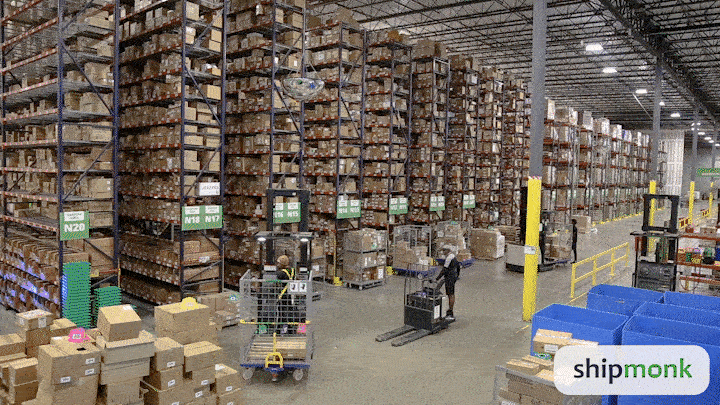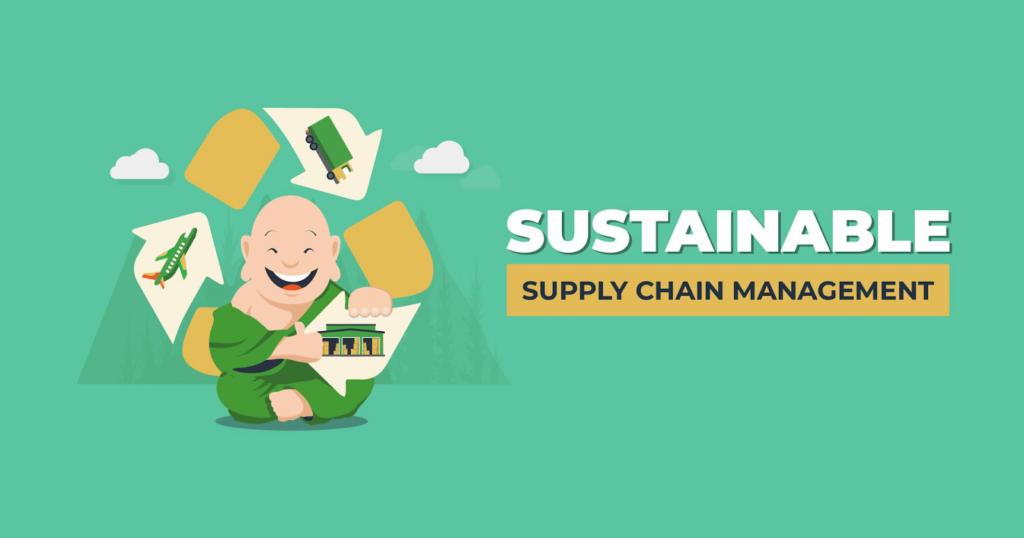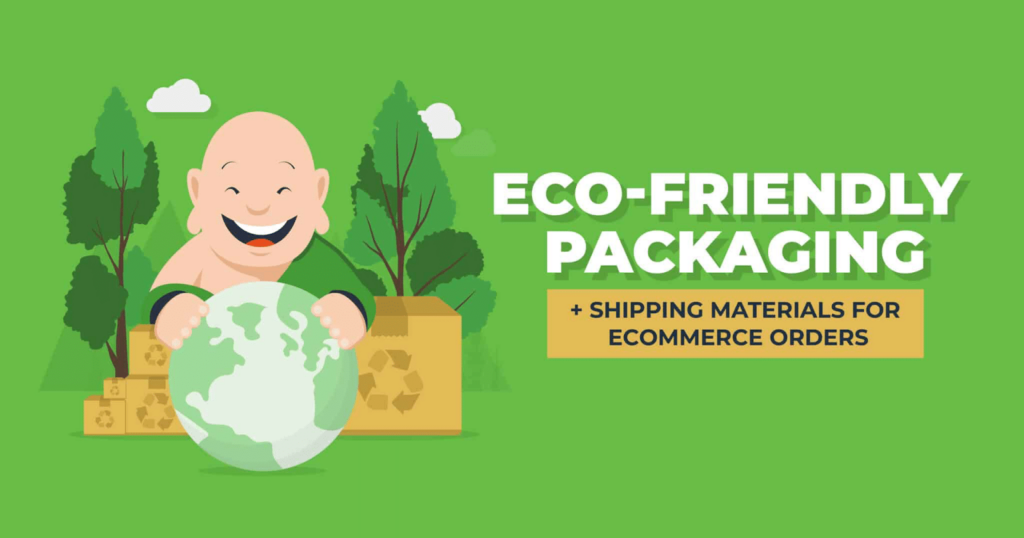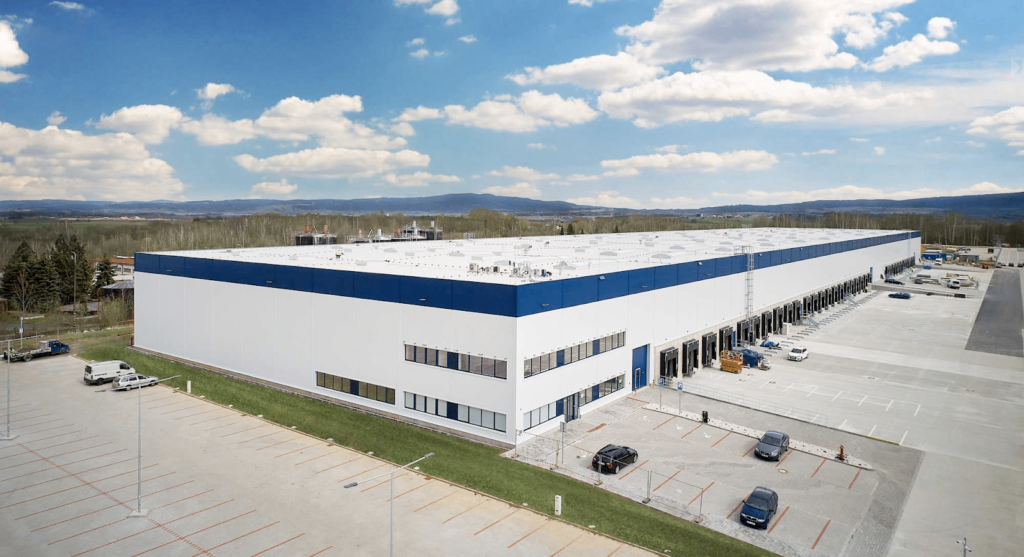Sometimes there’s a stigma that a business has to choose between making money and doing what’s right. Which means in the world of ecommerce business, entrepreneurs may feel torn between making eco-friendly decisions and strategic business ones. The good news is that you can stick that stigma where the sun don’t shine because there are plenty of ways to run a profitable eco-friendly ecommerce brand. And you should.
With every passing year, doing right by the environment becomes more of a requirement than an ethical responsibility. The reason? Brand reputation and success are growing more tied to eco-friendly practices, which customers care about. In addition to satisfying conscientious consumer demand, eco-friendly efforts can benefit your ecommerce business by reducing waste within your company and improving operational efficiencies.
With all that in mind, let’s dig up some facts about today’s eco-friendly ecommerce landscape and explore the top 10 recommendations for running an eco-friendly ecommerce business.

What is Sustainable Ecommerce?
Sustainable ecommerce brands have, or are actively trying to implement, eco-friendly and socially responsible business practices. Translation: these ecommerce businesses have operating standards that minimize or reduce negative impact on the planet. But how much do people really care if an ecommerce business is eco-friendly? And are they willing to pay more or wait longer for products from eco-friendly brands?
The Conscientious Consumer
The answers to the above questions are A LOT and YES. Skeptical? We have proof. All sorts of organizations have run studies on eco-friendly attitudes in the ecommerce industry, and we have amazingly positive news to share about what buyers are thinking.
According to the Business of Sustainability Index, despite intense inflation since 2020, 66% of general US customers and 80% of young adult (ages 18-34) US customers surveyed in 2022 are willing to pay more for sustainable products/companies that embrace sustainable practices.
In a survey of 6,000 consumers in North America, Europe, and Asia, 72% of respondents said they were buying more eco-friendly products than five years ago, and 81% asserted they expected to increase their eco-friendly buying behavior over the next five years.
Another survey found that 73% of global consumers would “definitely” or “probably” change their buying behavior to reduce environmental impact.


Establishing an Eco-Friendly Ecommerce Business
Okay, that was a lot of stats and surveys. And these positive, Earth-protecting assertions are only the tip of the doesn’t-have-to-melt iceberg. Now that we’ve established validity to the claim that “Eco-Warriors” make up an international army, not a small battalion, let’s talk about 10 ways an ecommerce brand can lean into an eco-friendly way of doing business.
1.) Embrace an Eco-Friendly Brand Identity
There are a ton of brands out there partnering with nonprofits that share planet-friendly passions. In terms of the environment, whether you care about saving the trees, bees, whales, or what have you, being an ongoing supporter of an organization that works toward making the world a better place can make your brand better too.
Of US adults surveyed, 69% say environmental impact is important when making a purchasing decision.
If your brand is positively associated with eco-friendly partners and practices, this can definitely give you a competitive edge. If you do embrace an eco-friendly brand identity though, it’s not enough to write a check to the right nonprofit every year. The choice to endorse an eco-friendly platform has to permeate every aspect of your brand and business. It should be reflected across your website, social media, promotions, and in your day-to-day company ethos.


2.) Educate Customers
In order to add value to your eco-friendly endorsement, and influence others to care about the same cause, you need to consistently convey your eco-friendly ethos across your business platform. Tell customers what you are supporting and why. Teach them how purchasing from you makes them a part of that positive mission. Clearly explain cause and effect.
In the 2022 Edelman Trust Barometer survey of 36,000+ consumers across 28 countries, 58% of people said they would “buy or advocate for brands based on their beliefs and values.” Even without a fancy survey, it’s completely logical that a person would be more prone to buying from an ecommerce brand that shares their beliefs and values. And considering 66% of individuals and 75% of millennials consider sustainability when making a purchase, educating the market on your commitment to being an eco-friendly brand can have a huge impact. You just have to make all details of that clear to people and make it clear that when they buy from you they are also helping the cause.
Think of your ecommerce brand as an eco-warrior. On your own, you may not be able to save the planet, and you can’t always count on people to just show up and enlist in the cause. You have to go out there and tell people what you are fighting for and convince them to join you. If you present the facts in easily understandable terms, that can make a world of difference. Studies show, for instance, that 71% of shoppers choose slower shipping options when the impact of faster shipping options is expressed in more relatable terms, like the number of trees saved.


3.) Go with a More Sustainable Shipping Strategy
Billions of packages are shipped just within the US every year. Getting all those orders from one place to another on a daily basis has serious environmental impact. Some ways to minimize the negative effects of this are:
Eliminate overnight shipping options. If products have a longer delivery window they can travel by ground transportation instead of air, which drastically reduces energy waste. It’s true we live in a world where people want things as soon as possible, but 2-day shipping is a widely beloved shipping method that is a happy medium between fast delivery and not polluting the world with unnecessary rush shipping measures.
Have your inventory stored in more than one warehouse or fulfillment center. The shorter the distance your products have to travel, the lower the carbon footprint. ShipMonk has 12 state-of-the-art facilities and counting strategically positioned across the globe to get products to purchasers quickly without a ton of travel.
Make sure you are properly packing your products. That includes using full pallet space, selecting the right size of packaging for orders, choosing the best option in terms of floor-loaded shipping vs. palletized shipping, knowing when to leverage freight shipping, etcetera.
Overall, when your warehouses or fulfillment centers are packing and sending your products in an optimal way, and you are offering shipping options that don’t unnecessarily pollute the planet, you are taking epic steps toward eco-friendly ecommerce.


4.) Take Steps Toward Sustainable Supply Chain Management
Imbuing sustainability into your supply chain is not an easy task. It requires a lot of introspection and critical analysis of your operation. At a glance, you need to:
Assess your unique ecommerce brand’s situation
Set actionable goals, and a plan to achieve them
Get your team on the same page
Work with like-minded vendors
Be transparent with your customers
This is just a summary, of course. To learn more about the benefits and implementation of sustainable supply chain management, you check out our eco-friendly blog focusing on the subject. We hope you do! In order to truly be an eco-friendly ecommerce brand, you need to ensure that all levels of your operation are putting in the effort to protect the planet to the best of their ability.


5.) Reduce Return Rate
Shipping packages to customers already has substantial environmental impact; shipping the same package again because of a return makes matters worse. If you want your company to have a smaller carbon footprint, the goal should be to lower your return rate. Naturally, there will always be customers who aren’t happy with purchases, but you can minimize those cases by ensuring all information about your products online is as accurate, transparent and up-to-date as possible.
Consider the clothing industry as an example. It is commonly known in this industry that online shoppers practice “bracketing” i.e. purchasing items in assorted sizes and/or colors with the intention of trying them all on and returning those that don’t work out. There are many reasons a consumer would practice bracketing, but in the case of clothing, as a sample, 31% in 2022 stated it was because of size uncertainty.
Bracketing could theoretically be prevented if onsite product details, imagery, and buyer testimonials give a clear enough picture that a customer feels comfortable with making a single selection at the time of purchase. So ask yourself:
Do the pictures on your site completely, accurately represent what people are getting?
Do product pages have all the details from exact measurements to colors to fabrics?
Do you feature the product in the best way to understand how it looks/works in person?
Are disclaimers or relevant reviews featured to give buyers more insight?
The more information you give a customer upfront, and the better you communicate what your product is and how it can be used, the fewer chances of people being unhappy with what they’re getting.


6.) Minimize Packaging
Not every ecommerce order needs an Arc of the Covenant sized box or enough bubble wrap to suit the Michelin Man. Packaging waste is a definite problem in the ecommerce industry. When packages are too large, you must take into account the wasted materials used to create them, the wasted materials to fill them and protect the product(s) inside, and the wasted space they may take up in a shipping container or shipping truck.
With that in mind, an easy step an ecommerce brand can take to become more eco-friendly is make an effort to ensure orders are packaged in boxes/sleeves that aren’t too big for the product(s) being shipped and only necessary dunnage is used inside said packages.


7.) Use Eco-Friendly Packaging Materials
Every ecommerce order needs packaging and shipping materials. The further the distance an ecommerce order has to travel, the more critical it is for these materials to protect the product(s) inside. If materials are not substantive, an ecommerce order could be damaged, triggering the need for costly replacements and reshipping, which doubles down on the environmental impact of that order while generating negative customer experience with your brand. The good news is that there are many eco-friendly packaging options out there, and they really make a difference. In general, eco-friendly packaging/dunnage:
Is biodegradable and can be easily recycled
Prevents pollution to the environment
Does not harm humans or wildlife
Can be used for other purposes
Does not take as long to decompose as other materials
Supports a circular economy
Of course, different kinds of eco-friendly packaging options have different environmental impacts. Some more common, widely embraced eco-friendly packaging options include:
Corrugated packaging
Biodegradable packing peanuts
Air pillows made from recycled materials
Recycled cardboard
Kraft paper
There are plenty of other unique forms of eco-friendly packaging though, and people are developing new advancements in this field all the time. Everything from new forms of biodegradable and recycled plastics, to organic ecological textiles, to edible and food-based designs like mushroom packaging and seaweed packaging.
For a list of the 15 leading eco-friendly packaging options in the ecommerce industry now, check out: Eco-Friendly Packaging + Shipping Materials for Ecommerce Orders.


8.) Create Recycling Policies
As noted, there are plenty of eco-friendly packaging options an ecommerce brand can embrace. In addition, you may want to consider the recyclable factor of the boxes you are using. With 73% of Americans having access to curbside recycling, consider including recycling messaging within your branding platform (online, in confirmation emails/updates, and even on receipts/invoices inside packages). Encourage your customers to recycle their boxes, reiterate your brand’s commitment to the environment, and inspire buyers to join your efforts. You can even throw in some interesting recycling facts, like how every ton of recycled cardboard saves nine cubic yards of landfill space, and recycling cardboard uses 75% of the energy required to make new cardboard.


9.) Reduce Energy and Employee Waste
Have you heard the expression: Change begins at home? While most entrepreneurs’ minds jump to product design, packaging, and shipping when thinking about ways to embrace a sustainable business strategy, how your office spaces are run can also have a big impact. For example:
Think about investing in a renewable form of energy to run your buildings, like solar panels (which can provide tax cuts).
Control the temperature of your office; having an air conditioning/heating unit that only goes on to keep your building(s) at a preset temperature can reduce energy emissions and energy bills.
In terms of your employees, make sure all non-necessary lights are turned off at the end of the day and on weekends, perhaps with timers or remote controls that office managers have access to. Make sure your offices have recycling bins in all major areas so employees can easily contribute to an eco-friendly environment. Instead of stocking employee kitchen areas with plastic utensils, straws, or paper cups by the water cooler, have reusable cutlery and a dishwasher, encourage employees to bring their own utensils, and have water dispensers but no styrofoam or paper cups so people must bring their own reusable ones.
These are just some ideas, but the message is that making simple changes to your buildings can have great eco-friendly results that also benefit your bottom line because you’ll no longer be wasting money because of wasted energy or employee waste.


10.) Get Customers Involved
In regards to US consumers, 73% would sign up for a company’s voluntary rewards or loyalty program if it helped reduce the environmental impact of their purchases.
If given the opportunity, many people will opt to do good. That includes endorsing and helping an eco-friendly ecommerce brand. Your business can offer promotions or loyalty programs that incentivize shoppers to buy from you while benefiting some sort of eco-friendly endeavor.
Perhaps you can offer incentives based on customers choosing a slower shipping option, picking up an order in-store, returning an order in-store, or recycling packaging/reusable products in some way. All this varies on the structure of your ecommerce business and the products you sell, but the takeaway is that a sustainability marketing strategy can be beneficial to the Earth and your bottom line.
You could even take it a step further. There are plenty of ecommerce businesses that create service charges at checkout to offset environmental impact. What that means is an add-on to a product’s price that takes into account the cost to offset the carbon emissions the product needs to be produced and shipped.
Your company can build these offsets into the price of your product out the gate and let customers know a percentage of their purchase is going back to offset these costs (making you look like a brand that cares about its impact on the environment). Or you could not include these costs in the listed price and give customers the option to round up or donate a small amount at checkout to offset environmental impact themselves.


Why is it Important to be an Eco-Friendly Ecommerce Brand?
Until some ecommerce business comes up with safe, speedy spacecraft to another human-compatible world, this is the only planet we’ve got. We need to protect it, and ecommerce brands have a responsibility to help do so and offset the carbon footprint they create the same way a person who breaks a mug has a responsibility to grab a broom and clean up after themselves. As noted, there are plenty of ways to do that. But there are also plenty of reasons for an ecommerce brand to think eco-friendly past conscientious living and altruism. Being an eco-friendly ecommerce brand can also give you an edge over competitors, connect/endear you to customers, and save your company money as well.


Time to Go Eco-Friendly
Hungry for more info about why eco-friendly is the right way to run your ecommerce business? Well, we started with some stats, so let’s end with some stats.
Ecommerce is always evolving, but in general it is here to stay, and continue its momentum. By 2025, studies suggest that ecommerce sales will surpass $1.3 trillion.
75% of US buyers surveyed are concerned about the environmental impact of the products they buy and 81% of global respondents to a NIQ survey feel strongly that companies should help improve the environment.
The problem? 78% of people say that, “despite their desire to support companies that align with their values, they don’t know how to identify environmentally friendly companies.”
That’s where you have to put in the extra work. Ecommerce brands must always evolve to Keep up with competitors and the needs of consumers. Nowadays it is also necessary to keep up with the needs of the environment and an increasingly environmentally-conscious customer. Not only that, ecommerce brands need to be transparent, informative, and thorough with their eco-friendly efforts so every customer clearly understands their mission and the efforts they’re making.


A Final Word to World-Conscious Companies
It is tricky being a true eco-friendly ecommerce brand. Sustainability cannot come at the cost of profits otherwise your company could go out of business. But you can do it! And at ShipMonk, we’re here to support you in any way that we can from customizing your packaging to choosing the best shipping option to keeping your inventory in strategic places across our international fulfillment network.
As an added bonus, if you’re an ecommerce brand with customers in continental Europe, our newest European fulfillment center is located in Cheb, Czech Republic within Panattoni Park Cheb South, also known as one of Europe’s “greenest” industrial parks. This new fulfillment center was developed on the brownfield site of a former engineering plant. During the redevelopment, 90% of the construction and demolition waste was recycled and used directly in landscaping the redeveloped site.


ShipMonk Europe is on track to receive one of the highest ratings under the prestigious BREEAM environmental certification. The first completed building within the Panattoni industrial park already achieved the highest BREEAM rating of “Outstanding” and became the world’s greenest industrial building in 2016 thanks to its record score of 90.68%. ShipMonk’s new fulfillment center is constructed with similar levels of eco-friendliness, as rainwater is used for flushing, and the building includes a fully-operational rooftop PV system. The need for external electricity and water supply will thus be significantly reduced.
Considering the most recent Ecommerce Delivery Compass survey showed that more than 50% of European customers said they would select an online retailer with a lesser environmental effect for their purchases, that’s extra incentive to explore ShipMonk Europe now!
To learn more about our global fulfillment centers or how we can help your ecommerce brand achieve its eco-friendly goals, contact our team today!






















